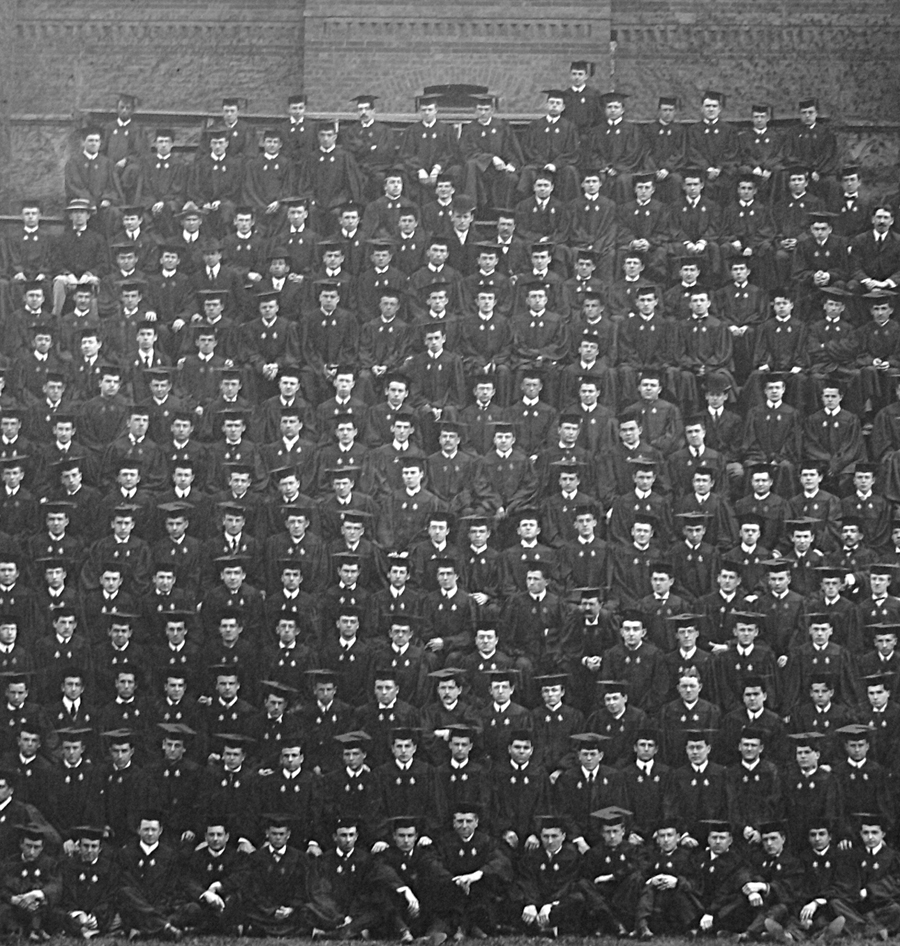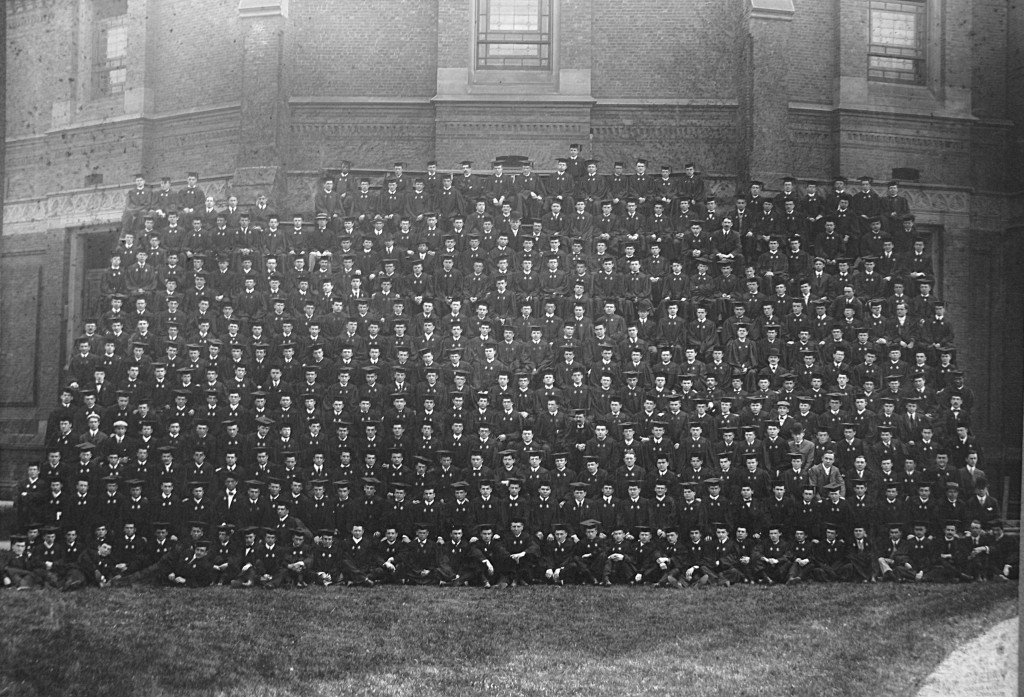One of the most delightful aspects of my “job” with the FDR Suite Foundation has been the interaction I’ve had with our students over the last four years. They are an incredible group of young adults at that wonderful point in life where nothing seems impossible and all roads remain open – their energy and enthusiasm are palpable, and provide a tonic for older, wearier bones. Our students are also incredibly, incredibly diverse, in a way that many of you who still remember the tie-and-jacket-clad all male Harvard of old might find almost unfathomable. Even I, who lived in Adams during the fast and free – and now almost legendary – 1980s am impressed. Looking out over the dining hall, the sea of faces is almost kaleidoscopic: Asian, African, Caucasian, Indo-European, European, Native American, of every kind and creed imaginable. There is no one of anything. And the interesting point is, our students take this state of affairs entirely for granted, as if Harvard had always been that way. Of course, if asked, they’ll certainly acknowledge that history must have been far different. But I don’t think they comprehend how different, and sometimes that bothers me; for to measure the worth of such intangibles, don’t you need some personal understanding of the opposite? Can you truly appreciate heat without knowing cold? Sweet without sour? Light without dark? Life without death?
No, I don’t believe so. Not fully. Nor do I think you are fully able to appreciate the expansive man Franklin Delano Roosevelt became as President unless you understand the much more narrow ‘Frank’ Roosevelt at Harvard, along with his highly restricted and closed off college world.
So… long story short, when I give tours of the Suite, I’m always looking for poignant illustrations of how rarefied life in Westmorly Court was, and how different the Harvard College of 1904 is from today’s Harvard University – The Gold Coast with its maid service, private clubs, breakfast in bed, bootblacks and doormen; the $50 Harvard tuition; the $500 Westmorly rent (the equivalent of some 35K); the gaslit rooms with flickering hearths; the neighing four-in-hand at each street corner; the 10 days it took to reach Europe by steamer, or the 6 days to the West Coast by steam engine (if you were lucky)…. Remarkable changes all, but still only charming facts and figures to the young.
And then one day a few weeks back, I came across this, or more precisely, I came across this once again, for I personally hung the full size version of this picture in the Suite last fall. (Click on the image to expand the photo.)
Now, I’ve looked at this picture a hundred times at least, in a fruitless search to find FDR and Lathrop in the sea of faces. (FDR, almost assuredly, is there somewhere. The man never missed a photo-op in his life.) But what struck me as I passed the other day was how uniform those faces were. Surely, there must be someone of color somewhere? Seemingly not… But then, wait, up there on the very last row, far to the left…

Sure enough. One proud black face, and next to him… a missing place. And then I noticed something else I had never seen before. A man standing – the only man standing – in the top row, behind the seated figures.
While we can’t be sure, does this seem a likely coincidence to you, that the only face of color in a sea of white is the only one with no one sitting next to him, and that the sole standing man has somehow missed the one remaining seat a few spots down to his right?
Hmmm…
I must admit that this discovery – perceived though it may be – has removed some of the pleasure this picture once held for me. Rather than playfully searching for Frank and Lapes as before, my gaze now inevitably wanders to that sole black face, sitting all alone, and I think to myself: what a courageous and remarkable person you must have been to attend a College where people chose not to sit next to you merely because of the color of your skin!
Still, as with most things, there’s a silver lining, I suppose. That perfect example I sought of how much life at Harvard has changed? It’s now just a mouse click away.


Hard to tell, Alan…
It must be possible to find out who the black student was, yes? And what happened to him?
Hi Judy. Yes, we probably could, if we can match face on the class photo to the class reports, and if the individual in question responded to the class secretary’s requests for updates. We know from other years that these pictures were published with keys – we have the one from 1905, for instance, but so far the 1904 key remains elusive…
A poignant photo. Yet, who knows without DNA analysis if there may have been other black classmates of FDR. Recall that Bill Clinton claimed or was claimed to be by others our first black president. In any case multiculturalism has already become passe and rejected – despite the Adams House dining room – in France, Germany and the UK. Times continue to change.
Dear Walter.
I think you raise two valid points. The first is that these days, many of us are part everything. Though blond and fair skinned, I share genes Southern Italian, Native American, Polish, and German. (And perhaps who knows what else?) A heady mix, surely, yet in 2011 I am (generally) judged for what I am, and what I do, not what I look like. But in FDR’s Harvard years, appearance often counted as much as accomplishments, and unless I am reading too much into it (and perhaps I am) it seems that our lonely young man was very much a product of that experience. As regards multi-culturalism, I believe that’s a different issue entirely. What you see at Adams today, and what I believe FDR would have applauded, is not so much each singing his or her own independent song, but rather each singing the same melody to slightly different lyrics – occasionally cacophonous, surely, but very much united in message and purpose, and by and large, very much part of the shared ideals of our American heritage.
Good work, Michael!
Thanks Jane!
That was fascinating. As others have said, it would be very interesting to learn more about this student.
The picture of the Class of 1904 leaves me with more questions than answers.
The picture appears to have been taken at the East end, on the North side of Memorial Hall. At first I thought that the empty seat next to the black classmate in the top row might be due to an architectural feature, but then I noticed quite a few empty seats scattered throughout the picture. Why? Wouldn’t classmates just fill row after row?
I noticed at least two more black classmates throughout the picture, besides the gentleman without a robe and wearing a bowler mentioned above.. Might they have sat, or been seated together? perhaps in the back row?
These questions lead me to believe that the seats were assigned, perhaps in alphabetical order? This would account for the empty seat next to the black classmate in the top row. A look at the 1905 key might shed some light on this question.
Why are there some classmates not in academic robes? I believe that seniors started wearing their robes at the beginning of the spring semester at that time. Probably they just forgot. But are those not wearing robes classmates but not graduates? Was the picture taken before or after graduation?
There appears to be a graduate student? professor? in the picture. He looks older than the rest, sports a mustache, and it appears that his crows feet are of a different color. On the other hand, the latter may merely represent a different degree. AB vs. SB? Different Harvard School? There appear to be a few others with muted crows feet.
I would hope that an Adams House undergraduate interested in history –and Harvard history – might research these questions. There is lots of information in the Archives – Class Reports and old issues of the Crimson and other publications.
I am of the belief that Harvard students graduate knowing less about their alma mater than the general public who learn about the “three lies” while standing in front of the supposed statue of John Harvard. Certainly the resurrection of the Roosevelt Suite has been helpful in providing information on Harvard’s rich and interesting history.
Hello Renny!
I can answer a few of your questions. Yes, your eagle eye has spotted two more African Americans, and in my next post I’ll tell you more about our lone black face in the rear. In the meantime:
Yes, there are a number of empty seats scattered throughout, but in blocks. No one else sits alone.
These pictures (like all the club pictures) were generally taken in the fall of Senior year, which explains why some are in street cloths. We know this as we see some of Chester Robinson’s class pictures actually hanging on the walls in the picture we have of his senior year room. This was a great discovery for us as it allowed us to hang FDR’s various group photos on the Suite walls with confidence.